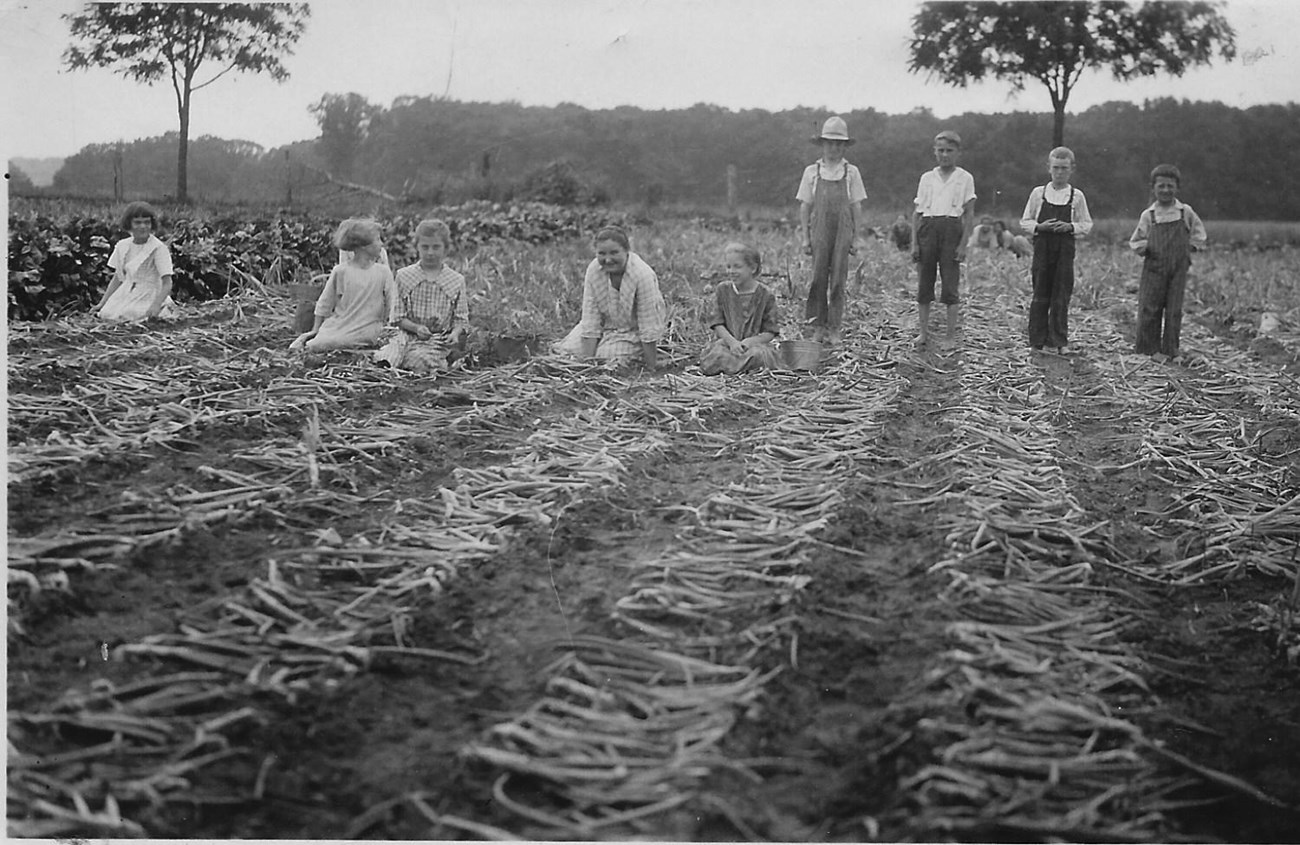Last updated: December 13, 2017
Article
Communal Amana

Photo courtesy of Amana Heritage Society
The True Inspirationists selected a location along the Iowa River Valley, about 20 miles west of Iowa City, for the community’s relocation. The area offered extensive timberland, quarries for limestone and sandstone, and long stretches of prairie filled with rich, black soil. In 1855 construction of the first village began. It was named "Amana," meaning "believe faithfully." Community members moved to Amana over the next ten years as they gradually sold parcels of the Ebenezer property.
All members of the community shared in its economic success. Rather than receiving a monetary income, members were provided with housing and other necessities. Everyone was given an annual purchase allowance at the general store where goods were priced at cost. Medical care was free and provided within the community. In return, each person worked. Elders assigned each individual a job based on community’s needs as well as the talents of the individual. Nearly all women, around age 14, worked in communal kitchens and gardens. They also tended to laundry, sewing, knitting, and occasionally worked at the woolen mills. Men's jobs were far more varied. Young men might learn to work in a craft shop, mill, or on the farms. Some men were sent outside the community to be educated as doctors or pharmacists.
By the 1860s the Amana Colony consisted of over 20,000 acres and seven villages. The villages were spaced a few miles apart, roughly in the shape of a rectangle. They were named according to their location: West Amana, South Amana, High Amana, East Amana and Middle Amana, in addition to the original village of Amana. The town of Homestead was purchased by the Inspirationists so that they could have a depot on the new railroad line.
Amana villages each consisted of 40 to 100 buildings. The barns and agricultural buildings were always clustered at the village edge. Orchards, vineyards and gardens encircled the villages. Typical houses were rectangular two-story buildings of wood post-and-beam construction, brick, or sandstone. Each village had its own church, school, bakery, dairy, wine cellar, craft shops and general store. There were also a number of communal kitchens in each village where groups of about 30-40 people ate their meals.
Although all Amana villages are similar, each has its distinctive aspects. The original village of Amana is reminiscent of a German town with a main street and side streets. On the other hand, the last village built - Middle Amana - displays a very American square block layout. South Amana is known for its brick construction, while West Amana and High Amana primarily feature sandstone. East Amana was an agricultural outpost, while Amana hummed with industry. The railroads' influence on the villages is evident in Homestead's single street.
The Amana settlement pattern of seven villages allowed the Inspirationists to easily access all their farmland. It also helped them avoid urbanization, which they felt encouraged immorality. The network of small villages maintained an overall unity and kept everyone close to the spiritual leadership.
The Inspirationists established mills and shops according to their old-world skills. Amana's woolen and calico factories were among the first in Iowa, and were known nationally for their superior quality. By 1908, the two woolen mills were producing about a half-million yards of fabric a year. The calico factory printed 4,500 yards of cloth each day. Two flour mills processed Colony grains, as well as those of neighboring farmers. Crops of potatoes and onions were shipped to Midwest markets. Profits from the mills and farms was used to purchase goods from outside the community.
The most important thing to Inspirationists was their religious purpose - to live a godly and pious life. Church services were held 11 times a week: every evening, Wednesday, Saturday and Sunday mornings, and Sunday afternoon. In addition to Christmas, Easter, and other Christian holidays, the Inspirationists held several special services during the year. The most important were the annual renewal of the covenant and Liebesmahl (Holy Communion). Additionally, an Unterredung, or yearly spiritual examination, was held in each community by elders. Elders questioned each member regarding their spiritual condition, and admonished them to lead a more pious life.
Church elders made up the community’s leadership and were always men. Villages functioned independently, though they were collectively overseen and directed by a Board of Trustees. This Board consisted of 13 elders who were elected by the adult members of the community. They conducted church services, and some managed the economic aspects and daily life of the villages. They showed a remarkable degree of flexibility to allow communal Amana to become one of America's longest-lived communal societies.
